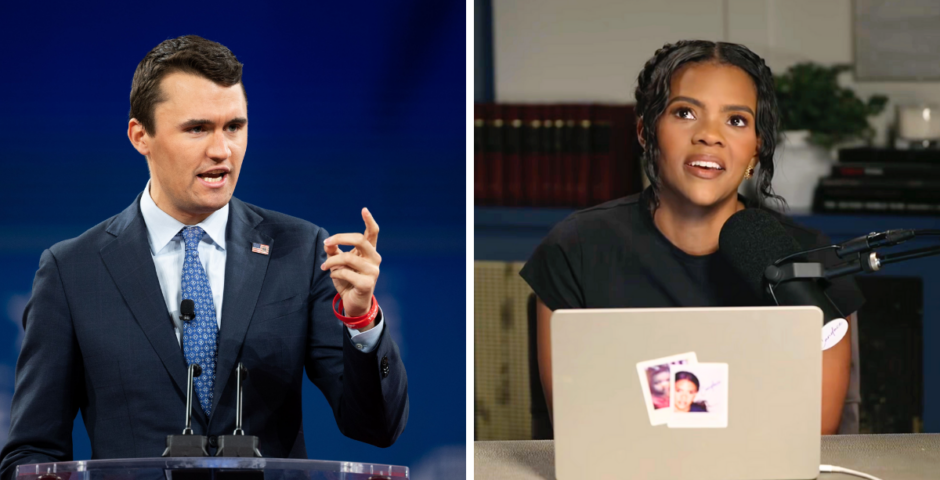Conservative commentator Candace Owens recently released a previously unseen photograph of Tyler Robinson, which has quickly become the center of national discussion. The image, showing Robinson inside a Dairy Queen restaurant, has circulated widely across social media platforms and news outlets. Unlike the speculative theories circulating online, what can be confirmed is the powerful role a single image can play in shaping public conversation, media narratives, and the broader public’s perception of ongoing events.
Who Is Candace Owens?
Candace Owens is a political commentator, author, and activist known for her outspoken views on American politics and culture. She rose to prominence as a conservative voice in the late 2010s and has since built a substantial following across digital platforms. Owens frequently uses her platforms to share commentary, analysis, and materials that spark public conversation on political and social issues.
Her decision to release the Robinson photo demonstrates once again her ability to influence discussions across mainstream and digital spaces.

Details of the Photo
The photograph shows Tyler Robinson standing inside a Dairy Queen restaurant. He is dressed casually in jeans, a shirt, and a hat. The timestamp of the image indicates it was taken in the early evening hours.
From a factual standpoint, what stands out about this image is not speculation about hidden clues but the calm and composed demeanor Robinson displays. The photo’s authenticity has not been challenged, and Owens has confirmed it was released by her team.
Why the Photo Matters
Images can serve as key pieces of evidence in both public discourse and investigative processes. According to the U.S. Department of Justice, photographs and video evidence are often critical for establishing timelines, confirming locations, and verifying witness statements.
The Robinson image, while not revealing new facts on its own, underscores the role of visuals in shaping how the public engages with unfolding stories.

Social Media Amplification
The release of the photo quickly spread across platforms such as X (formerly Twitter), Instagram, and TikTok. Within hours, hashtags related to Robinson and Owens were trending. This rapid circulation highlights how modern media ecosystems can amplify single data points — sometimes outpacing official reports or news coverage.
Research from Pew Research Center shows that more than half of Americans now consume their news primarily through social media. This trend underscores why an image like the Robinson photo can generate such wide-ranging public interest in a short time.

Reactions from Supporters and Critics
Public reactions have been mixed. Supporters of Owens argue that she has provided transparency by sharing a piece of visual evidence that adds to the public record. Critics, however, question whether the release of such photos outside of official channels risks fueling confusion or unnecessary speculation.
Both perspectives highlight a larger tension in today’s media landscape: the balance between transparency and responsibility when releasing potentially sensitive materials.
The Role of Photographs in Investigations
Legal experts emphasize that photographs like the Robinson image must be interpreted cautiously. According to the National Institute of Justice, visual evidence should always be evaluated alongside other forms of corroborating information, including forensic analysis, eyewitness accounts, and official reports.
The Robinson photo provides a timestamp and a location, but it does not independently establish intent, sequence of actions, or broader context. This underscores the importance of relying on verified investigations rather than drawing conclusions from images alone.

Candace Owens’ Influence on Public Discourse
Owens has a track record of drawing national attention through her use of digital platforms. Whether one agrees with her views or not, her ability to influence media cycles is evident.
By releasing the Robinson photo, Owens not only introduced a new element into the public conversation but also highlighted how individuals outside traditional journalism can shape narratives. Scholars of media studies point to this as part of the broader phenomenon of citizen-driven news cycles, where influential personalities can bypass traditional gatekeepers to reach mass audiences directly.

The Psychology of Public Response
Behavioral experts note that the public often reacts strongly to visual content. Unlike written reports, photographs provide immediate emotional impact. A calm facial expression or a neutral stance, such as Robinson displays in the photo, can trigger varied interpretations depending on the viewer’s prior beliefs.
Studies published in the Journal of Communication confirm that images are far more likely than text alone to spark emotional responses and viral sharing online. The Robinson photo fits this pattern, demonstrating how one image can dominate conversation even without additional context.
Media Responsibility in Reporting Visual Evidence
The release of the Robinson photo also raises questions about journalistic responsibility. Reputable news outlets often stress the importance of contextualizing images to prevent misinformation. The Society of Professional Journalists’ Code of Ethics advises against publishing content that could mislead or oversimplify complex situations.
For media organizations, covering the Robinson photo requires careful reporting that distinguishes between what is confirmed fact and what is public speculation.
Conclusion
The release of the Tyler Robinson photo by Candace Owens has once again demonstrated the power of images in the digital age. While the photograph itself provides limited factual information, its circulation highlights how quickly visual content can shape narratives, spark debate, and influence public perception.
As experts caution, photographs should always be considered within the broader context of verified evidence and official investigations. For audiences, the lesson is clear: images can be powerful, but they must be understood carefully and responsibly.
Owens’ decision to share the photo has ensured that Robinson remains at the center of public attention. Whether viewed as transparency or controversy, the event underscores how a single image can ignite national and even international discussion.



